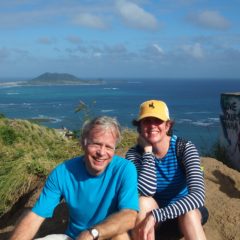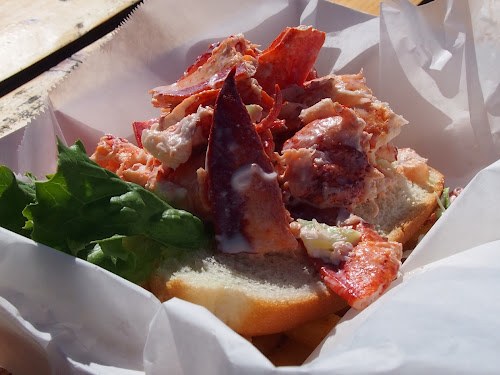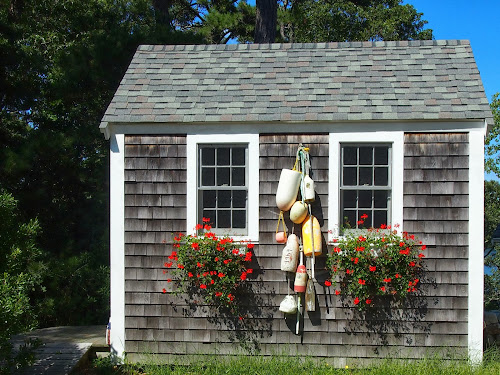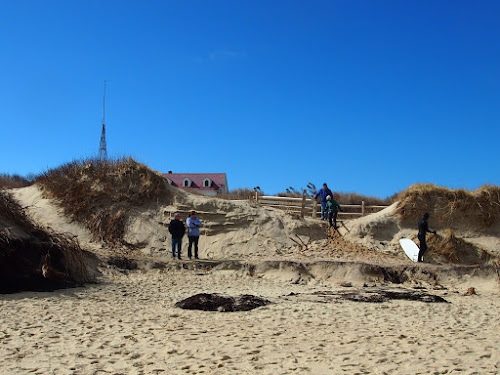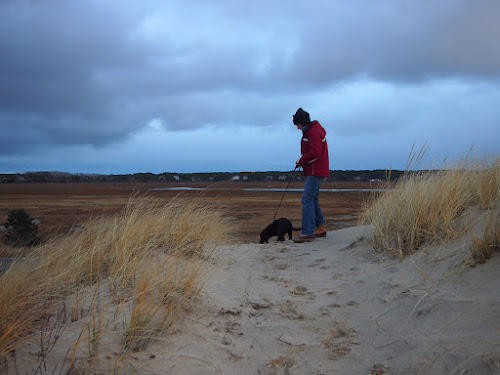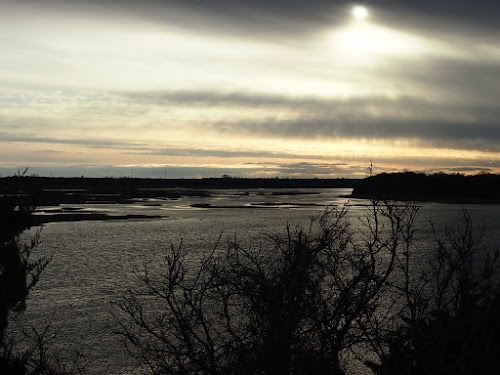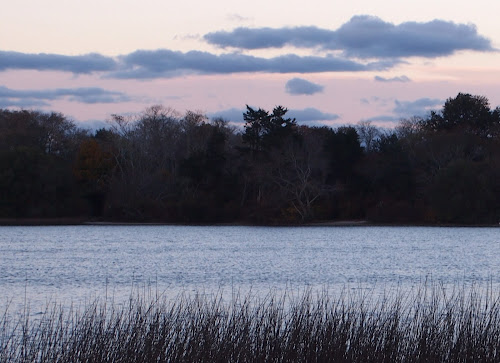Beachcombing in December has lots to offer. We found this whale vertebra just after high tide at First Encounter beach. It was about two feet from the water’s edge. The Cape is prime whale watching territory. We’d love to find a shark’s tooth.
What good is a great place for walking on beaches if you don’t have a dog? Momo is a chocolate lab puppy with a distinctive personality (the breeder called her Alvin). She loves the beach and the bike trail, but is still a bit shy with an abundance of puppy rambunctiousness and a fondness for cuddling on your lap.
Sea turtles are often trapped in Cape Cod Bay while trying to head south for the winter. When they become “cold stunned” and wash up on shore, volunteers find them on the beaches and start them on a human-aided journey south. Here, Amanda calls in a Kemp’s Ridley turtle to Mass Audubon for a pick-up from Breakwater Beach in Brewster.
Topping a dune at First Encounter looking towards Bee’s River, on the trail of a good scent.
Kyle drove up with his Grandmother to spend Christmas and New Years with us. This is Hemenway Landing looking out into Nauset Marsh.
Nauset Marsh lies behind Coast Guard beach on the Atlantic. You may be able to make out the waves crashing near the horizon. Most of the birds we see on our pond fly back and forth to the marsh. It’s very close. You often see people wading out from small boats for shellfish; yes, even in December.
Back towards Hemenway Landing from the Coast Guard station at Coast Guard beach, the following evening in late December.
Taking a run at low tide, towards dusk, Coast Guard beach.
Last minute requests, Christmas Eve.
The annual photo with cousin Katherine, on break from that au pair gig in Paris.
The first snow of the winter looks spectacular. 2013 here we come!
